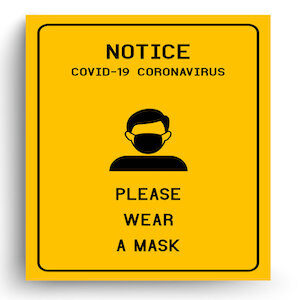By Dr. Ken Broda Bahm:

It is as if the public health groundhog emerged from its den, saw its shadow, and now promises six more months of confusion, polarization, and pandemic fatigue. With the more-transmissible Delta variant of the Coronavirus surging across the country, there is concern that we may not be over the hill yet, and may not even be particularly close. The U.S. Centers for Disease Control this past Tuesday issued new guidance recommending a return to masks, even for the vaccinated, for those who are in “an area of substantial or high transmission.”
The assumption is that most Americans know whether they live in an area of high transmission or not, or will know to make reference to a detailed and dynamic county-level map to find out. And the problem is that those who are most likely to do that are not the main part of the problem. As expressed in a New York Times piece by David Leonhardt, “The parts of the country that would benefit most from a new crackdown on Covid-19 — including more frequent mask wearing — are also the places least likely to follow CDC guidance.” So what we have is another round of advice, along with another round of inconsistent and politicized adherence. This continuing drama has an effect not only on the physical operation of courts, but also on the attitudes toward risk and safety, as well as personal and collective responsibility that potential jurors will be bringing to court. I think there are three quick implications to note.
Online and Hybrid Trials Are Still With Us
The idea of picking a jury, hosting a witness, or even running a full trial via web-conferencing technology is at this point even less likely to be fully discarded as a quaint relic of 2020. Courts in many parts of the country, where restrictions have been significantly eased or eliminated, now face the prospect of returning to shields, masks, distance, disinfectants, and strict attendance limits. In that situation, it will be quite tempting to hang on to some of the distant-communication technologies that have been pioneered (if not quite yet perfected) during the pandemic. In addition to addressing the persistent risks, they also have some advantages of their own.
Polarization Is Likely to Become Even Stronger
It will be interesting to see how the CDC’s new mask guidance plays out, or whether it makes a change at all. Even as infection rates climb, many parts of the country have quite consciously returned to a very “normal” vibe. Unlike the polarization of the past, however, there is the potential this time for resistance to come from both ends of the spectrum: The vaccinated are likely to feel, with some statistical justification, “We aren’t the problem,” while the unvaccinated will continue to treat the crisis as overblown, the solution as too new and uncertain, and the restrictions on their freedom as untenable.
Personal and Collective Responsibility Are Likely to Remain Especially Salient
Many of the values at play in the current social situation resonate strongly with issues that underlie many civil cases: Are perceptually small dangers that involve other people worth thinking about? Is risk a matter of personal responsibility, or do we have a collective duty to minimize danger? Is it noble or self-defeating to sacrifice some freedom and convenience for the greater good? The lines being drawn in our drawn-out public health response are lines that run through many case stories. Our own data has revealed that there is a noticeable uptick in support for collective responsibility during the medical emergency, but also that the extremes have gotten a little more extreme. As always, it will be important to voir dire carefully and with an eye toward personal experience and the current situation.
______
Other Posts on Pandemic Adaptations:
- The Post-Pandemic Courtroom: Reflect on When Remote Court Still Makes Sense
- Treat the Pandemic as a Bias Laboratory
- Prime Your Jurors on the Pandemic, Make Them More Conservative